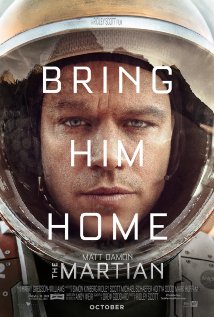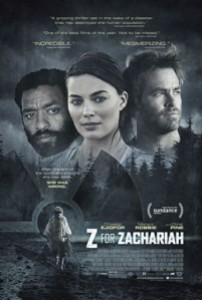 The most impossible feat in Ridley Scott’s “The Martian” is not that a man can survive on Mars. “The Martian” is refreshingly optimistic, a movie that believes in not just the ingenuity and resourcefulness of mankind but the camaraderie and good-nature. It speaks to the power of the Internet and society in the 21st Century to collectively find a solution, but also rally around a moment in history. At the end of “The Martian” the whole world is watching in a unified sensation to see if Mark Watney will make it back alive. That’s an inspiring fantasy we only see in the movies, and one even less common in 2015.
The most impossible feat in Ridley Scott’s “The Martian” is not that a man can survive on Mars. “The Martian” is refreshingly optimistic, a movie that believes in not just the ingenuity and resourcefulness of mankind but the camaraderie and good-nature. It speaks to the power of the Internet and society in the 21st Century to collectively find a solution, but also rally around a moment in history. At the end of “The Martian” the whole world is watching in a unified sensation to see if Mark Watney will make it back alive. That’s an inspiring fantasy we only see in the movies, and one even less common in 2015.
Who better to incite humanity’s collective attention and care than an everyman movie star like Matt Damon? Damon here embodies pure American values and a can-do attitude, even as he sheepishly blows himself up or loses his cool. He’s a guy, above all, the kind of guy you’d want to be stuck alone on a planet with, but he’s a movie star and he’s better than you, so he’s exactly the person we want to root for.
Damon is Mark Watney, a member of a mission to Mars that goes wrong when a violent storm strands Mark from his team, who leave him for dead on the red planet. When he wakes, he quickly realizes his survival hinges on lasting long enough for another manned mission to arrive, potentially as long as four years, on communicating with NASA to let them know he’s still alive, and to grow food on a planet where nothing grows.
Good news! “I’m a botanist,” he proclaims, as if to say, “Challenge accepted. Bring it, Mars.” Mark gins up a way to grow potatoes for as long as four years, he finds a way to create water (just take two parts hydrogen and add oxygen. Not that anything bad has ever happened with humans trying to manipulate hydrogen), and he harvests leftover plutonium and a rover from previous Mars missions.
Back on Earth, NASA’s scientists have to be worn down over time to reject their cynicism. They’re all calculations and risk, dismissing Mark’s initially rudimentary attempts to communicate. Soon they’ll come around, and so do we. There’s not a moment in “The Martian” where we don’t believe in Mark’s gumption to survive or his creativity in McGyvering a solution, even something as simple as “Duct tape fixes everything.”
Part of that is “The Martian’s” embrace of science and logic. “The Martian” is methodical and practical in its explanation as to how Mark will survive, and the film never harbors an illusion that it’s about anything else but the ability to tackle the impossible.
But another part is that the film is perhaps quieter and more contemplative than the edge-of-your-seat thrill ride that was “Gravity”, another lost-in-space film with impossible odds. Mark communicates via video logs, so “The Martian” isn’t quite as reserved as something like “All is Lost”, but it sets aside time for Mark to enjoy some bad disco music or to bemoan running out of ketchup.
“Gravity” never had time for such scenes in its slick 90 minutes, and while that film found incredible economy by never setting back down on Earth, “The Martian’s” Earthbound scenes don’t feel like an after thought. Scott paces the film in dual, cross-cutting action, with NASA and JPL engineering the same solutions for communication or for outfitting a rover as Mark is figuring things out. Chiwetel Ejiofor and Jeff Daniels make sparks as NASA’s two directors debating how best to allocate resources to rescue Mark. And following “Magic Mike XXL”, this is the second film this year in which Donald Glover shows up halfway through and stops the show with his captivating performance.
When Sandra Bullock touched down on Earth, she was all alone on an idyllic lake. “The Martian” visualizes a breathtaking and inspiring homecoming in Times Square, with the whole world hooked on Mark’s safe return. Such a sight seems as unlikely today as a man trapped on another planet. But “The Martian” earns those lofty aspirations and positive, inspirational sensations because it believed in them to begin with.
4 stars
 The indie drama “Z for Zachariah” is a post-apocalyptic sci-fi in name only. Movies such as this year’s “Ex Machina” or the horror film “The Babadook” have played with genre as their setting to tell what is essentially a contemporary story. The scene and the plot are merely set dressing for a bigger parable.
The indie drama “Z for Zachariah” is a post-apocalyptic sci-fi in name only. Movies such as this year’s “Ex Machina” or the horror film “The Babadook” have played with genre as their setting to tell what is essentially a contemporary story. The scene and the plot are merely set dressing for a bigger parable.